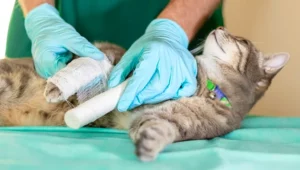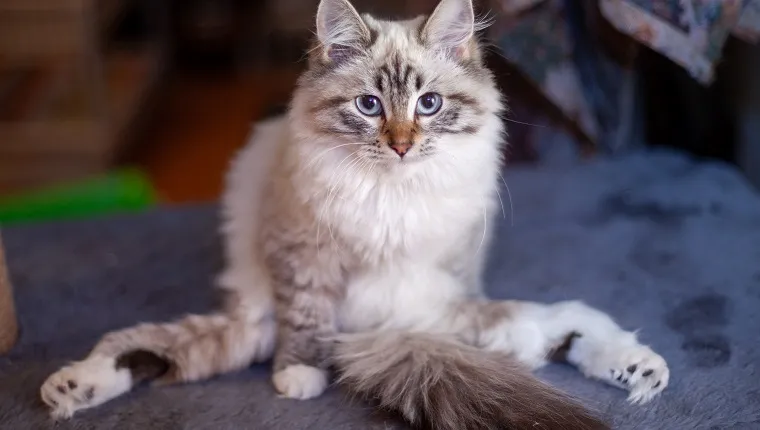Hey there, fellow feline enthusiasts! Today, we’re diving into the depths of a topic that might sound a bit unusual: Swimmer Syndrome in Cats. Don’t worry if you haven’t heard about it before; it’s not exactly a common topic of conversation at the cat cafe. But fear not, by the end of this article, you’ll be armed with all the knowledge you need to understand this condition.
What Exactly is Swimmer Syndrome?
Alright, let’s start with the basics. Swimmer Syndrome, also known as swimming puppy syndrome, might ring a bell if you’ve spent time around newborn kittens. It’s a condition that affects the way kittens move, making them appear as if they’re paddling through water. But here’s the kicker: they’re not in water at all. It’s more like they’re doing the cat version of the breaststroke on dry land.
What are the Symptoms?
Spotting Swimmer Syndrome isn’t rocket science, but it does require a keen eye. Kittens affected by this condition typically have splayed legs, making them unable to stand or walk properly. Instead of the usual graceful feline strut, they might flop around like tiny, furry turtles. Poor little things!
What Causes Swimmer Syndrome?
Now, onto the nitty-gritty. What’s causing these tiny furballs to paddle around like they’re in the kiddie pool? Well, there isn’t just one single cause. It’s a bit like a mystery novel with multiple suspects. Some experts believe it could be due to genetics, while others point fingers at environmental factors like improper bedding. And let’s not forget about the role of nutrition; a lack of certain nutrients during pregnancy could also be a culprit.
How Can You Treat Swimmer Syndrome?
Now for the million-dollar question: Can Swimmer Syndrome be treated? The good news is, yes, it can! The first step is getting your fluffy friend to the vet. They’ll be able to give a proper diagnosis and recommend a treatment plan tailored to your kitten’s needs. This might include physical therapy, specialized exercises, or even custom-made braces to help straighten out those wobbly legs.
Causes Of Swimmer Syndrome In Cats

Genetic Factors
One of the primary culprits behind Swimmer Syndrome in cats is genetics. Certain breeds are predisposed to this condition due to their genetic makeup. While any kitten can potentially be affected, breeds like Persians, Scottish Folds, and Himalayans seem to have a higher incidence rate. It’s like inheriting your grandma’s quirky dance moves – some traits just run in the family!
Developmental Issues
Just like humans, kittens go through a series of developmental milestones. Sometimes, things don’t go as smoothly as planned, leading to developmental abnormalities. Swimmer Syndrome can occur when a kitten’s muscles, bones, or nervous system don’t develop properly, preventing them from supporting their body weight effectively. It’s like trying to ride a bike with wobbly wheels – not the smoothest journey!
Environmental Factors
While genetics play a significant role, environmental factors can also come into play. Improper breeding practices, such as overcrowded conditions or inadequate nutrition during pregnancy, can increase the risk of Swimmer Syndrome. It’s like trying to build a sturdy house with flimsy materials – the foundation just isn’t strong enough!
Treatments For Swimmer Syndrome In Cats
So there you have it, folks! Swimmer Syndrome might sound like something out of a quirky pet comedy, but it’s a real condition that can affect our feline friends. By keeping an eye out for the symptoms and seeking help from a vet, we can give these kittens the support they need to paddle their way back to full health. And remember, if you ever find yourself face-to-face with a kitten doing the cat version of the backstroke, don’t panic; just lend a helping hand and a reassuring purr.
- Best Lusha Alternatives for 2025 - April 19, 2025
- Best Overloop Alternatives for 2025 - April 19, 2025
- Best Snov.io Alternatives for 2025 - April 18, 2025



